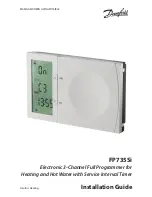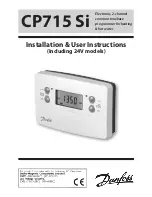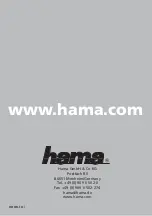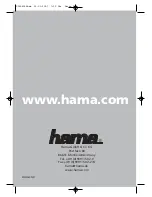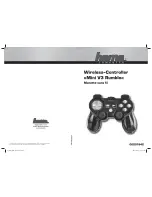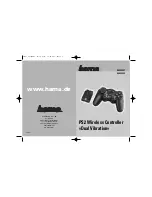
TRACKSTAR
BEFORE AND DURING INSTALLATION OF THE WHEEL
MAKE SURE THAT THE SWITCH WIRES ARE ROUTED
THROUGH THESE SLOTS. THE WHEEL SCREWS
SHOULD BE TIGHTENED ONLY AFTER VERIFYING THE
CORRECT POSITION OF THESE WIRES
Figure 5 - WHEEL AND PADDLE SET INSTALLATION
CENTER LOGO
STEERING UNIT
BUTTON
WHEEL MOUNT
SCREWS (5)
STEERING
WHEEL
CHASSIS
STEERING UNIT
HUB
SHIFT PADDLE SET
BUTTON RETAINING RING
WHEEL AND PADDLE SET EXPLODED VIEW
WHEEL MOUNT
SCREWS (5)
DISCARD
NUTS (5)
TEMPORARY
WHEEL SPACER (OPTIONAL)
TWO
BUTTON
PADDLE
HOOKUP
LEFT HAND
PADDLE
BUTTONS
RIGHT HAND
PADDLE
BUTTONS
WIRES FROM STEERING HUB
WIRES FROM
STEERING HUB
SIX
BUTTON
PADDLE
HOOKUP
I
3-P N FE ALE
M
S
ONNECTOR
C
I
3-P N MALE
S
CONNECTOR
LEFT HAND
PADDLE
BUTTONS
RIGHT HAND
PADDLE
BUTTONS
3-PIN F
AL
EM
E
ONNECT RS
C
O
PI
A
6- N M LE
N
CO NECTOR
and back support points - DO NOT CANTILEVER only from the central plate –
structural damage will occur without two points of support.
If inverted mounting is used, note that the hub is drilled with ten wheel mounting
holes for the five wheel screws. The extra holes allow the wheel to be mounted
upright without an adapter when the chassis is inverted 180 degrees.
2.0
PEDAL UNIT SETUP AND ADJUSTMENT
2.1
ASSEMBLY SEQUENCE
1
Prepare a clean well lit area with adequate room for laying out the pedal
components [Figure 8]. In addition to the supplied hex keys you will need a
pair of ½ inch open end wrenches to complete assembly. The pedal unit is
shipped in two components; the base and the pedal frame assembly. Study
the side view illustration of the assembled pedal unit [Figure 9] before
proceeding. If you have ordered a clutch pedal, refer to the clutch installation
instructions first, for they supersede the following steps.
2
In the pedal base assembly, locate the two silver diagonal struts. Remove
the two bolts holding these struts nearest the heel rest. Leave the rear bolt in
place. Rotate these struts vertically until they are tilted towards the rear of
the base [Figure 10].
3
Retrieve the 6 inch long 5/16 diameter threaded rod and related nuts from
the hardware kit supplied with the pedal unit. This rod will be used to attach
the pedal frame assembly to the base at Pivot A as shown in Figure 10. Note
that there are four vertical slots for this attachment. These are used to offer a
variety of positions fore-to-aft of the pedal relative to the heel rest. If initial
use will be at a typical desktop workstation, select the second slot from the
front of the unit. If initial use will be in a low-slung cockpit situation, then
select a slot further to the rear. In any case, after initial setup is completed,
this position can be changed without disassembly of the entire pedal unit.
4
Position the pedal frame vertically with its mounting holes aligned with the
chosen slot in the base unit [Figure 10, step 1].
5
Guide one end of the threaded rod through one side of the base and frame
holes. Before passing through the holes in the opposite side, twist two nuts
onto the threaded rod. Guide the rod through the opposite side holes and
twist the nuts apart so they contact the two sides of the pedal frame [Figure
11 step 2]. Makes sure the rod is centered in the frame. Turn the nuts no
more than finger-tight.
6
Place the two washers and remaining two nuts onto the threaded rod [Figure
11 step 3]. Turn the nuts down finger-tight to the frame.
7
Note that each Pivot A base mounting slot has three notched positions.
These are to adjust the vertical position of the pedals relative to the heel
rest. Select the middle notch to start with and set the threaded rod into the
same position on both sides. This adjustment can be easily changed after
the entire pedal unit is assembled. Do not tighten the nuts at this time. Allow
the pedal frame to rotate freely for now.
Next pivot the diagonal struts forward [Figure 10 step 2] and align their
holes with those in the pedal frame. The pedal frame and the struts will
form a triangle. Insert the bolts at Pivot D [Figure 12] on each side. Make
sure to






















